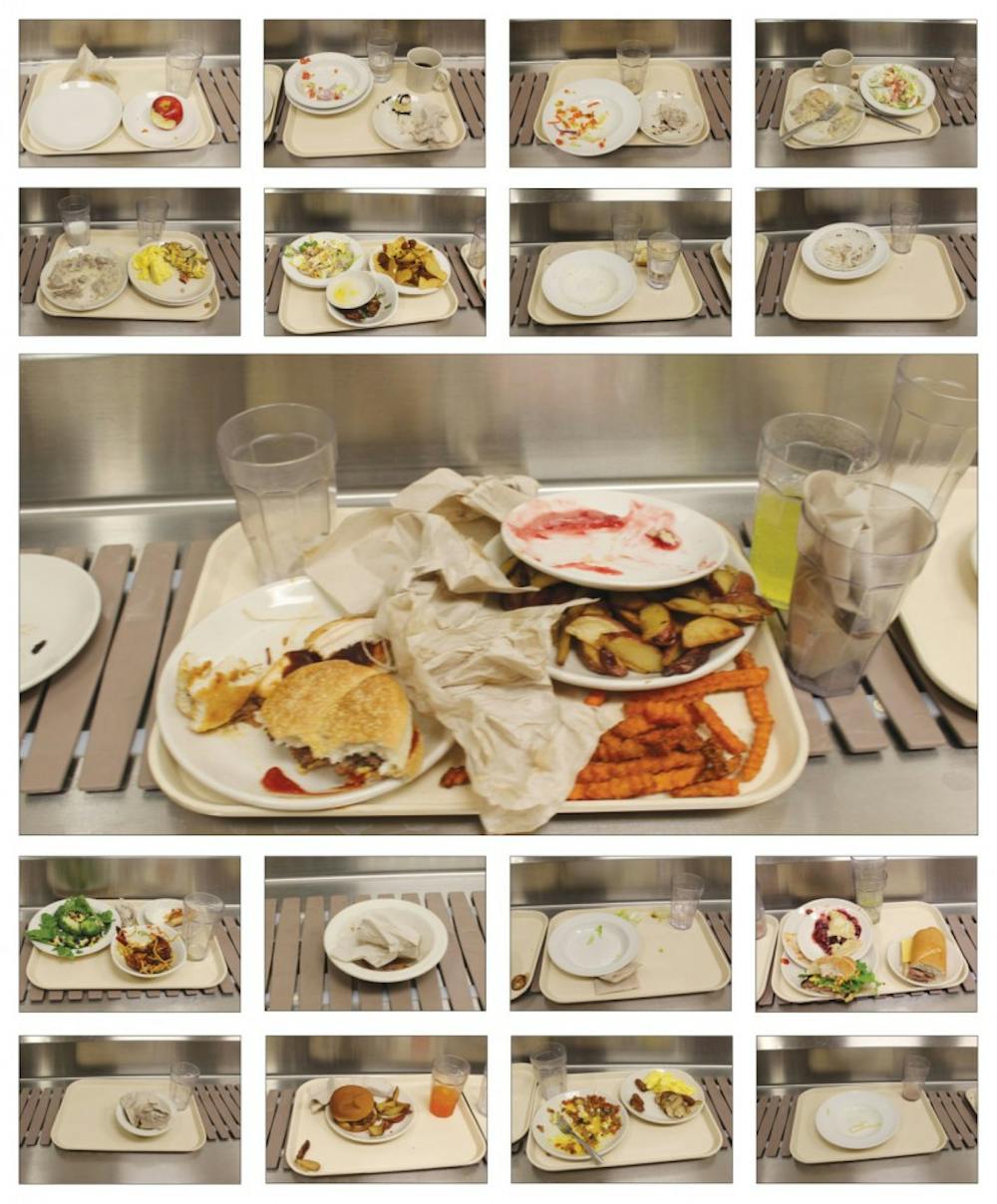Culinary Services and Zero Waste efforts attempt to curb food waste culture at Ohio University.
Slightly more than $56,000 worth of food was thrown away at Ohio University last year — but that’s actually a lot less than what was wasted compared to three years ago, data show.
That’s about 1 percent of the university’s total spending on food, valued at $4.8 million according to the same report for 2013-14 academic year.
The monetary value of food waste has significantly decreased from previous years, with a 31 percent drop from the 2010-11 value of food thrown away at $82,340, a figure adjusted for inflation. The university could not provide data for the 2011-12 and 2012-13 academic years by press time, citing an inability to easily find that information.
“We rely heavily upon inventory data from past years” to determine how much food to purchase said Dan Pittman, assistant director of auxiliary sales and marketing for Culinary Services, in an email.
Out of 1,100 food trays photographed by The Post over two months in Boyd and Nelson Dining Halls, about 120 plates did not contain noticeable traces of food waste.
That means nine out of every ten trays contain noticeable amounts of food to be discarded, according to The Post’s analysis.
Still, much of the waste — food or otherwise — is composted.
Students employed in OU’s Culinary Services sort through their peers’ leftovers and deposit appropriate food waste and other compostable items such as napkins into green compostable bins. These bins are then delivered to the compost facility six days a week.
Students working in Culinary Services are also trained in ServSafe, the university’s safe food handling system in evaluating food for reuse.
Ohio University’s Office of Sustainability reported almost 700,000 pounds, or 348 tons, of compostable food waste delivered to the nearby university compost facility for that same period.
This amount does not include any of the food waste procured from eateries where students must sort food waste themselves, said Tess Phinney, reporting coordinator and a graduate student in the Voinovich School of Leadership and Public Affairs.
In addition to the compost facility solution for a large majority of OU student food scraps, Culinary Services also focuses on reducing food waste from the production end with a centralized kitchen facility.
“Instead of making soup, sauces, pasta, rice and other food items individually in all of our units,” Pittman said, “these items are made in one location and shipped out.”
It also eliminates redundant machinery within each of the dining facilities, allowing for a more energy efficient production footprint overall, Pittman said.
In addition, to-go boxes offered in the dining halls are compostable — but many students toss these boxes in the trash bins in their residence halls.
“That is a challenge we are working to solve, hopefully in the near future,” Kate Blyth, student zero waste coordinator, said in an email.
Eventually, the university aims to divert 90 percent of waste from landfills.
Simple acts, such as using reusable water bottles and coffee mugs, or utilizing the numerous composting and recycling bins around campus, are small steps to improving sustainability on campus, Blyth said.
“Ultimately, power to reduce the amount of compostables sent to the landfill is really in the hands of all university students, faculty, staff and guests,” Phinney, the Voinovich student who is pursuing a masters in environmental science, said. “We all have the ability to correctly sort our waste and reduce the amount of food we waste in the dining facilities.”
@bnbjourno
bb308113@ohio.edu






